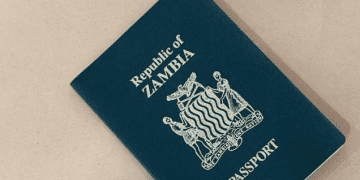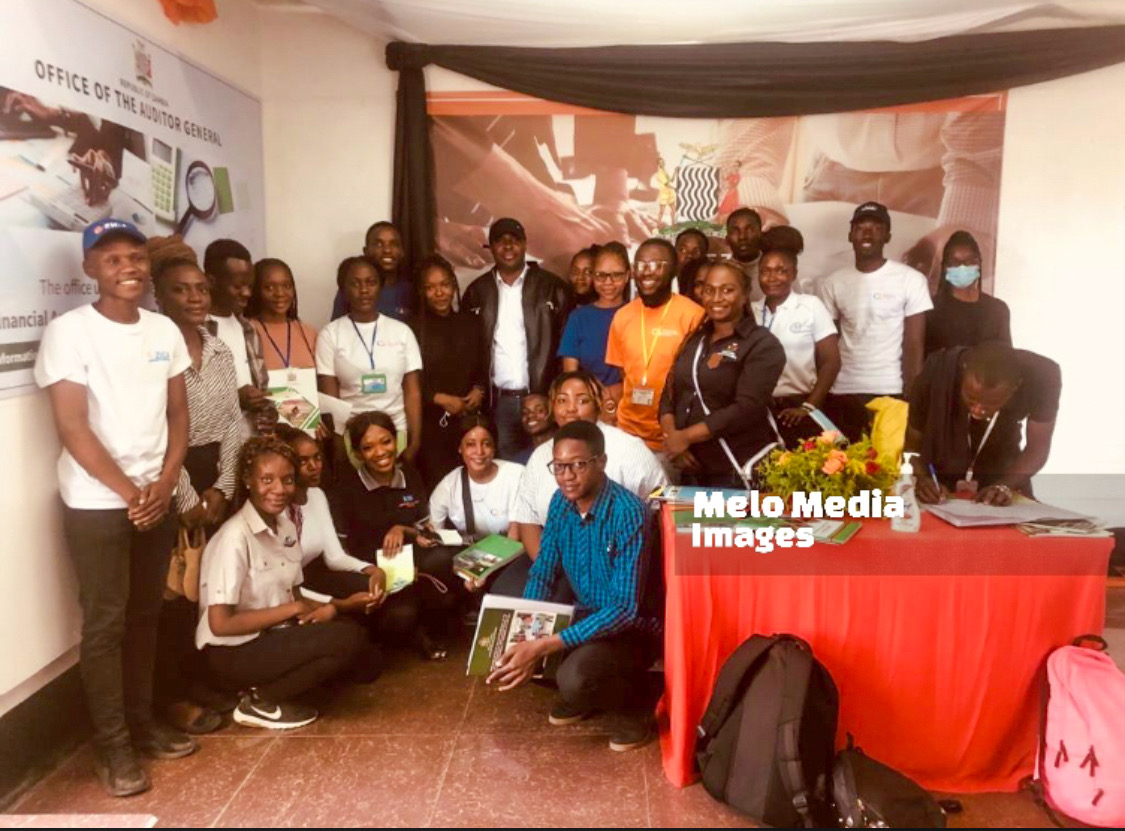By Kampamba Shula
Abstract
Mealie meal is a staple food in Zambia. This paper explores the irrationality surrounding Zambia’s mealie meal market and the government’s involvement in it as both a referee and player. Despite seeming contradictory, the government’s position is driven by the political significance of mealie meal. This paper deduces the irrationality of maize subsidies and the preference given to non-indigenous grains whilst covering the goals of domestic consumption and food security. It also highlights the irrational behavior of maize as a Giffen good violating the economic law of demand. Using these axioms the paper proceeds to use the ancient Egyptian logic of calculating irrational numbers specifically the square root of two, in which the paper proposes an irrational solution to the irrational mealie meal problem. The paper recommends that the government grows its own maize stock to offset FRA purchases for local consumption and allow smallholder farmers to export for profit at a golden ratio of 1.618. The same ratio can be used to diversify the national food basket with sorghum and millet so the government can ensure that there is enough food for everyone while also promoting sustainable agriculture practices.
1 Kampamba Shula is an economist with a wealth of experience in research, consulting, policy analysis, legislative advocacy, and governance. Email [email protected]
Introduction
Economist Thomas Sowell once said, “The first lesson of economics is scarcity: there is never enough of anything to fully satisfy all those who want it and the first lesson of politics is to disregard the first lesson of economics.”
Mealie meal is a staple food in Zambia, and it is made from maize that is milled into flour. The Zambian government has been involved in the mealie meal market as both a referee and a player, which has led to apparent irrationality in its position. This paper aims to examine the irrational solution to the irrational problem of mealie meal in Zambia. This has been the default status for so long as the course of history shows us. Regimes have been toppled and riots have broken out over either the availability or price of mealie meal. The political quotient of maize is indisputable. Government involvement in the sector has thus been to steer the dynamics to a favorable result (Shula, 2017). This has proved easier in theory than practice.
Origins and Significance of Maize and Mealie Meal in Zambia
Maize, also known as corn, is a staple food in Zambia and is used to make mealie meal, a flour used to make the country’s traditional staple food, nshima. The origins of maize and mealie meal in Zambia can be traced back to the indigenous grains that were grown in the country before the introduction of maize by the Portuguese in the 16th century.
Indigenous Grains of Zambia
Before maize was introduced, the indigenous grains grown in Zambia were millet, sorghum, and finger millet. These grains were well adapted to the local climate and soil conditions and were an important source of food for the people. They were also used to brew traditional beer and in some areas, the grains were used to make a type of porridge known as ubwali.
Millets are small-seeded grasses that are drought-resistant and can grow in poor soils. They are a good source of protein, carbohydrates, and fiber and are rich in minerals and vitamins. Sorghum is another grass that is grown for its grain and is similar to millet in its nutritional value. Finger millet, on the other hand, is a cereal that is high in calcium and iron and is known for its ability to survive in harsh environmental conditions.
Introduction of Maize
Maize was introduced to Zambia by the Portuguese in the 16th century, and it quickly became popular due to its high yield and ability to grow in a variety of soils and climates. Maize was also seen as a sign of modernization and was associated with a better quality of life.
The adoption of maize had significant impacts on the indigenous grains. The cultivation of millet, sorghum, and finger millet declined as farmers shifted to maize production. The promotion of maize by the colonial administration also led to the neglect of the indigenous grains, which were seen as inferior and backward.
The introduction of maize led to the development of the mealie meal industry in Zambia. Mealie meal is made by grinding maize into a fine powder, which is then used to make nshima, a thick porridge that is a staple food in Zambia. Nshima is typically eaten with a side dish of vegetables, meat, or fish.
Mealie meal has become an important part of Zambian cuisine and culture. It is not only a source of nutrition but also a social and cultural symbol. It is often shared with family and friends and is a way of bringing people together.
In summary, the origins of maize and mealie meal in Zambia can be traced back to the indigenous grains that were grown in the country before the introduction of maize by the Portuguese. Millet, sorghum, and finger millet were important sources of food and played a significant role in Zambian culture. The adoption of maize had significant impacts on the indigenous grains, leading to a decline in their cultivation and promotion of maize as a sign of modernization. The introduction of maize also led to the development of the mealie meal industry, which has become an important part of Zambian cuisine and culture.
Considering the historical perspective, we can thus deduce from mealie meal by virtue of the role it plays that it presents an irrational problem for Zambia. This shall be explained more in detail later.
Mealie meal in Zambia
Mealie meal is a staple food in Zambia, and the government has been involved in the mealie meal market as both a referee and a player. The Food Reserve Agency (FRA) is a government agency that was established to ensure that there is enough maize for domestic consumption and to maintain food security. The FRA buys maize from farmers at a fixed price and sells it to millers at a subsidized price. The millers then use the maize to produce mealie meal, which is sold to consumers.
The Irrationality of Maize Subsidies
Maize is the staple food of Zambia and is consumed by the majority of the population. The government of Zambia has implemented maize subsidies in an attempt to make the price of maize affordable for its citizens.
The first reason for the irrationality of maize subsidies in Zambia is the cost of implementing the program. The government incurs a significant cost to purchase the maize and provide the subsidies. This cost is often higher than the benefits that the citizens receive from the program. In addition, the subsidies have led to inefficiencies in the market, with farmers and traders becoming dependent on government support, leading to a lack of competition and resulting in higher prices for consumers.
Furthermore, the subsidies are often not targeted towards the intended beneficiaries, and there have been reports of corruption and misuse of the subsidies. This has led to the subsidization of wealthy farmers and traders, rather than those in need, leading to the further exacerbation of poverty and inequality.
Another issue with maize subsidies is that they disincentivize the production of other crops. The subsidies have led to an overemphasis on maize production, resulting in neglect of other crops that may be more suited to certain regions or that could generate higher profits. This has led to a decrease in crop diversity and reduced agricultural productivity.
In conclusion, maize subsidies in Zambia have been criticized for their irrationality due to their high cost, inefficiencies in the market, lack of targeting, disincentivization of other crops, and lack of investment in other sectors of the economy. While the intention of the subsidies was to make the price of maize affordable for citizens, the unintended consequences have been detrimental to the economy and the population. Therefore, it is important for the government to re-evaluate its maize subsidy program and
consider alternative solutions that promote efficiency, productivity, and development in all sectors of the economy.
A contemporary look at Mealie meal market
FISP is a government scheme that has been credited for the increased productivity among smallholder farmers since it was first introduced in 2001. It initially was referred to as the Fertilizer Support Program but was revised and renamed in 2009 to the FISP to reach more smallholder farmers, who typically produce more than 90% of Zambia’s total corn crop, with a mandate to supply government-subsidized seed and fertilizer to smallholder farmers to increase efficiencies and food security.
Despite Zambia being a leading maize producer in Africa, the country’s economy is constraining performance of the sub-sector, a situation that has been exacerbated by a runway national debt crisis. The debt crisis has rendered the Food Reserve Agency (FRA), a government entity with mandates to stabilize food supply in Zambia, unable to pay for grain delivered in the 2020-21 marketing yeari.
In 2022 Finance and National Development Minister Situmbeko Musokotwane had announced measures to further open Zambia’s maize market while ensuring food security by proposing the removal of the 10% export duty. The proposal, which took effect on Nov. 1, 2021, is expected to reduce Zambia’s revenue by K18.1million (US$1 million) for the 2021-22 financial year. Key export destinations for Zambia’s maize are Zimbabwe, Tanzania, Kenya, Mozambique, Malawi and South Africa.
Recently, the minister revealed that Zambia could no longer export maize to Kenya because of deficitii.
In 2023 the Minister of Finance signed a statutory Instrument to Suspend Duty on Imported Mealie Meal to Stabilize Prices. The measure was aimed at addressing the shortage of mealie meal in some parts of the country and is expected to increase the availability of the commodity.
The suspension of duty on imported mealie meal is part of the Customs and Excise (Suspension) (Maize (Corn) Flour) Regulations, 2023, which were gazetted and came into operation on 6th April, 2023. This measure was expected to stabilize mealie meal prices and ensure that citizens have access to affordable food.
In recent months, citizens have been queuing for hours to buy a bag of mealie mealiii. The shortage has led to high prices, with a bag of mealie meal fetching a minimum of K250. Many citizens are frustrated and angry over the situation, which they believe is due to government officials and aligned ruling party businessmen engaging in smuggling activities.
To address the shortage, the Zambia National Service (ZNS) has offloaded 5,000 bags of mealie meal in the Copper belt Province. The ZNS will continue to supply mealie meal to the province every week to help address the shortage of the commodity. Copper belt Minister Elisha Mat ambo announced that a task force has been put in place to curb the rampant smuggling of mealie meal in the province. The task force has impounded over 15,000 bags of mealie meal and confiscated over 70 vehicles used in smuggling activities. Mr. Matambo urged citizens to be vigilant and report any illegal activity related to mealie meal smuggling. The suspension of duty on imported maize flour is expected to stabilize the prices of mealie meal and ensure that citizens have access to affordable food.
Mealie meal shortages and their causes
Mealie meal shortages have been a problem in Zambia, and there are several reasons for this. One of the reasons is that the FRA has not been able to buy enough maize from farmers, which has led to a shortage of maize for milling. Another reason is that the FRA has been selling maize to millers at a higher price than it was buying it from farmers, which has led to mealie meal shortages. The government has also imposed export bans on maize which have recently been lifted, which has led to a shortage of maize for domestic consumption.
The nexus between the farmer, the FRA, and millers
The FRA is responsible for ensuring that there is enough maize for domestic consumption, and it buys maize from farmers at a fixed price. The millers then buy the maize from the FRA at a subsidized price and use it to produce mealie meal, which is sold to consumers. However, there have been complaints that the FRA has been selling maize to millers at a higher price than it was buying it from farmers, which has led to mealie meal shortages.
As explained in a paper by (Shula, 2020) with the presence of FRA in the maize market there are effectively three mini markets which make up the whole maize market. The first market is a closed market with occasion intruders between Farmers and FRA. This market is occasionally intruded by briefcase dealers looking to buy from farmers at a low price and sell to FRA at a higher price. This is the market in which FRA sets a price ceiling which it unfortunately mistakes for a price floor. The second market is the market between FRA and Millers. This was the market in which the subsidies where introduced. FRA would sell subsidized maize to millers in this market but millers never passed on the cost saving to consumers. The final market is the one between Millers and Consumers. This is the market in which the ordinary person buys the mealie meal which the take home and consume. If the market was liberalized this would be a two way market, one between farmers and millers and one between millers and consumers. But this is not the case. What is happening is that government is actually setting a price ceiling in the Farmer-FRA market and a price floor in the Miller- Consumer market. What government intends to do is actually set a price floor in the Farmer-FRA market and a price ceiling in the Miller-Consumer market. This is distortion of policy is what is creating the illusion that higher surpluses will translate to lower prices while the market dynamics between the three mini markets do not support such an assertion. There is always a trade-off. Government will have to decide an appropriate way to address the welfare of consumers as well as households who make their income from maize. But to do this Government will need to see the maize market for what it really is, a three tier market with little homogeneity formed into one. Under these market dynamics production surpluses will not translate into price decreases due to the inherent difficulty in such a market structure.
Mealie meal as a Giffen good
Mealie meal has been classified as a Giffen good in Zambia. This means that as the price of mealie meal increases, the demand for it also increases. This is because mealie meal is a staple food in Zambia, and people are willing to pay more for it, even if they have to cut back on other expenses.
A paper by Shula (2020) ivconcluded that Mealie meal in Zambia (Corn meal) is not a normal good in the economic sense, it is a Giffen good. This paper sets out the conditions under which we would expect Giffen behavior can be demonstrated by elaborating Marshall’s statement with respect to Mealie meal prices in Zambia. This paper concludes that the very poorest and the least poor consumers have downward sloping
demands for Mealie meal, while the group in the middle exhibits Giffen behavior. This presents the axiom of irrationality that this paper proceeds to reason from.
An exception to the standard economic inverse relation between price and quantity demand was made famous by economist Robert Giffen. The “Law of Demand,”v which holds that as the price of a good increases, consumers’ demand for that good should decrease, is one of the bedrock principles of microeconomics (Jensen & Miller, 2008). However, economists have long recognized that the axioms of consumer theory do not guarantee that demand curves must slope downward, and that the Law of Demand, while descriptively valid in many situations, may not apply to very poor consumers facing subsistence concerns
An Irrational theorem application
The history of irrational numbers
Ancient Egypt
The Greeks and Egyptians were among the earliest civilizations to attempt to calculate the value of irrational numbers. The ancient Egyptians used a system of unit fractions to represent irrational numbers such as the square root of two, and the Greeks developed the concept of irrational numbers as a result of the Pythagorean Theorem.
Depending on where you are in the world, you are probably familiar with the meter, inch, feet or centimeter. Similarly, the Ancient Egyptians had developed a system which helped them progress in their assertion of architecture and calculations. They indeed used the royal cubit. It represented an early pharaoh’s forearm length, hence the name, “royal cubit”. The length of 1 royal cubit is often simplified to 52.37 centimeters.
It is believed that Ancient Egyptians used the royal cubit as a measurement base for the Great Pyramid of Giza. Indeed, when looking at its details, we see:
A base of 440 royal cubits
A vertical height of 280 royal cubits
A slopping height of 356 royal cubits
Are you noticing a pattern? Each value is a round number. The writer Peter Lemesurier found 30 examples of the use of the royal cubit, within the Great Pyramid.
From the royal cubit, Ancient Egyptians birthed the Double Remen. 1 Double Remen equals the square root of 2 cubits, which is considered an irrational number.
Merriam-Webster defines an irrational number as one, “ that can be expressed as an infinite decimal with no set of consecutive digits repeating itself indefinitely, and that cannot be expressed as the quotient of two integers”. The most famous example of an irrational number is pi.
“And thus Egypt was the cradle of the mathematical arts.”
Herodotus, Metaphysics.
However, in his book Blacks and Science, Volume One, Robin Walkervi explains that “ In mathematics, the square root of 2 is regarded as the irrational number par excellence.” This suggests a high probability that Ancient Egyptians understood the concept of irrational numbers.
According to Britannica.comvii, “the Rhind papyrus (c. 1650 BCE) indicates that ancient Egyptians used a value of 256/81 or about 3.16045.”¹ This number remains closed to Pi, which has a value of 3.14159.
Then if we look at the golden ratio, when talking of the Great Pyramid of Giza: “If the sloping height of the Pyramid is 356 royal cubits and half of the base is 220, then 356/220 = 1.61818181”.
If we compare this result to the current value of the golden ratio, we find that both numbers are identical up to the third decimal. Considering that the Great Pyramid of Giza dates back to over 4000 years ago, the presence of such metrics can only pick our interest.
Babylon

There is evidence that Pythagoras Theorem was discovered very early by the Chinese and the Indians, but exactly how early is not known. The earliest tangible record of Pythagoras’ Theorem comes from Babylonian tablets dating to around 1000 B.C. In addition to tablets containing exercises which depend on knowing at least a few specific cases, a number of tablets have been found with pictures which are in effect proofs of the Theorem in the special case where the sides of the right triangle are equal.
The number system concerns whole numbers and fractions. In practical computation for building and surveying however, quantities can be more complex. Some arise geometrically as ratios, and turn out to be irrational numbers. A rational number is one which can be expressed as p/q, where p and q are whole numbers and q≠0. An irrational number cannot be so expressed, e.g. √2.
He is unworthy of the name of man who is ignorant of the fact that the diagonal of a square is incommensurable with its side.
Plato
Pythagoras
Pythagoras played a crucial role in this development by discovering the relationship between the side lengths of a right triangle and the irrational number, the square root of two.
Irrational numbers, such as the square root of two or pi, have always fascinated mathematicians and scientists throughout history. The Greeks and Egyptians were among the earliest civilizations to attempt to calculate the value of these numbers, and Pythagoras played a crucial role in developing the concept of irrational numbers. In modern times, irrational numbers have become a topic of interest for more than just mathematicians, particularly in Zambia, where the irrational problem of mealie meal has plagued the country.
Golden Ratio
The Golden Ratio, also known as the divine proportion, is a mathematical constant that has fascinated mathematicians, artists, and scientists for centuries. This number, which is approximately 1.6180339887, is an irrational number that has many interesting properties and applications in various aspects of life.
One of the most intriguing properties of the Golden Ratio is its irrationality. An irrational number is a number that cannot be expressed as a ratio of two integers. In other words, its decimal expansion goes on forever without repeating. The Golden Ratio is one such number, and its decimal expansion is a non-terminating, non-repeating sequence of digits.
Despite its seemingly random nature, the Golden Ratio has been observed in many natural phenomena. For example, the spiral patterns found in seashells and the growth patterns of plants and animals often exhibit the Golden Ratio. The proportions of the human body, such as the ratio of the height of the navel to the total height, also follow this ratio. This has led some to believe that the Golden Ratio is a fundamental principle that governs the structure of the natural world.
The Golden Ratio has also been used extensively in art and design. Many famous artworks, such as Leonardo da Vinci’s Vitruvian Man and Salvador Dali’s The Sacrament of the Last Supper, feature the Golden Ratio. The ratio’s aesthetic appeal is believed to be due to its harmonious proportions, which are pleasing to the eye.
In architecture, the Golden Ratio has been used to create buildings that are not only aesthetically pleasing but also structurally sound. The Parthenon in Athens, Greece, is a classic example of the Golden Ratio’s use in architecture. The ratio is used to determine the dimensions of the building’s columns, pediments, and other architectural features.
The Golden Ratio has also been observed in the financial world. The ratio appears in stock market trends, commodity prices, and other financial indicators. Traders and investors use the ratio to predict market movements and identify potential investment opportunities.
In conclusion, the Golden Ratio is a fascinating and versatile mathematical constant. Its irrationality and presence in various aspects of life make it an object of interest to mathematicians, artists, and scientists alike. From the natural world to art, architecture, and finance, the Golden Ratio has found a place in many different fields, proving that mathematics truly is the language of the universe.
The irrational solution to the irrational problem
We have deduced in this paper through the irrationality of subsidies and the irrationality of preference given maize is not an indigenous grain to the soil. We have also highlighted the irrationality of maize at exhibits Giffen good behavior which is at odd with standard economic theory. From these axioms of irrationality we the proceed to apply the irrational number of the golden ratio for a solution of Government market interference since for obvious political reasons the Government must somehow be involved in Maize the foreseeable future either as referee of player.
The problem of mealie meal in Zambia can be approached using the logical concept of deriving irrational numbers. One possible solution is for the government to grow its own maize for domestic distribution using ZNS while allowing smallholder farmers to export their maize for the highest profit at a golden ratio of 1.618. This approach is similar to how irrational numbers are derived, where a pattern or sequence of numbers goes on infinitely without repetition.
To implement this solution, the government can create a system where it grows maize for local consumption, ensuring that there is enough supply to meet the demand. At the same time, the government can allow smallholder farmers to export their maize for the highest profit at a golden ratio of 1.618, ensuring that the farmers get the best return on their investment. This ratio is derived from the golden ratio, which is an irrational number that has numerous applications in mathematics and science.
To make this solution even more effective, the government can also make long-term policy changes to diversify the national food basket with indigenous grains like millet and sorghum. This will not only help to reduce the reliance on maize but also ensure that there is a variety of nutritious foods available to the population.
Conclusion
The problem of mealie meal in Zambia is a complex one, and the government’s involvement as both a referee and a player has led to apparent irrationality in its position. By applying the logical concepts of deriving irrational numbers by the Greeks, an irrational solution to the problem can be proposed. In conclusion, by applying the logical concepts of deriving irrational numbers, the problem of mealie meal in Zambia can be solved by implementing a combination of short-term and long-term solutions. By growing its own maize for domestic distribution stock to offset FRA purchases, allowing smallholder farmers to export their maize at a golden ratio of 1.618, and diversifying the national food basket with indigenous grains like millet and sorghum, the government can ensure that there is enough food for everyone while also promoting sustainable agriculture practices.
References
Shula, K., 2017. Maize Law, Lusaka: Economics Association of Zambia.
Shula, K., 2020. Maize Meal in Zambia The Giffen good paradox, Lusaka: Zambia Chamber of Commerce and Industry.
i https://www.world-grain.com/articles/17575-debt-crisis-constrains-zambias-maize-sector
ii https://www.theeastafrican.co.ke/tea/news/east-africa/zambia-we-have-no-maize-for-export-4196466
iii https://www.lusakatimes.com/2023/04/11/minister-of-finance-signs-statutory-instrument-to-suspend-duty-on-imported-mealie-meal-to-stabilise-prices/
iv Maize Meal in Zambia: The Giffen Good paradox, Kampamba Shula, 2020, ZACCI Journal
v Jensen, R. & Miller, N., 2008. “Giffen behavior and subsistence consumption,”. American Economic
Review, pp. vol. 98, no. 4, pp. 1553–1577.
vi Blacks and Science Volume One: Ancient Egyptian Contributions to Science and Technology AND The Mysterious Sciences of the Great Pyramid, May 27, 2013, Robin Oliver Walker
vii https://www.britannica.com/topic/Rhind-papyrus







































